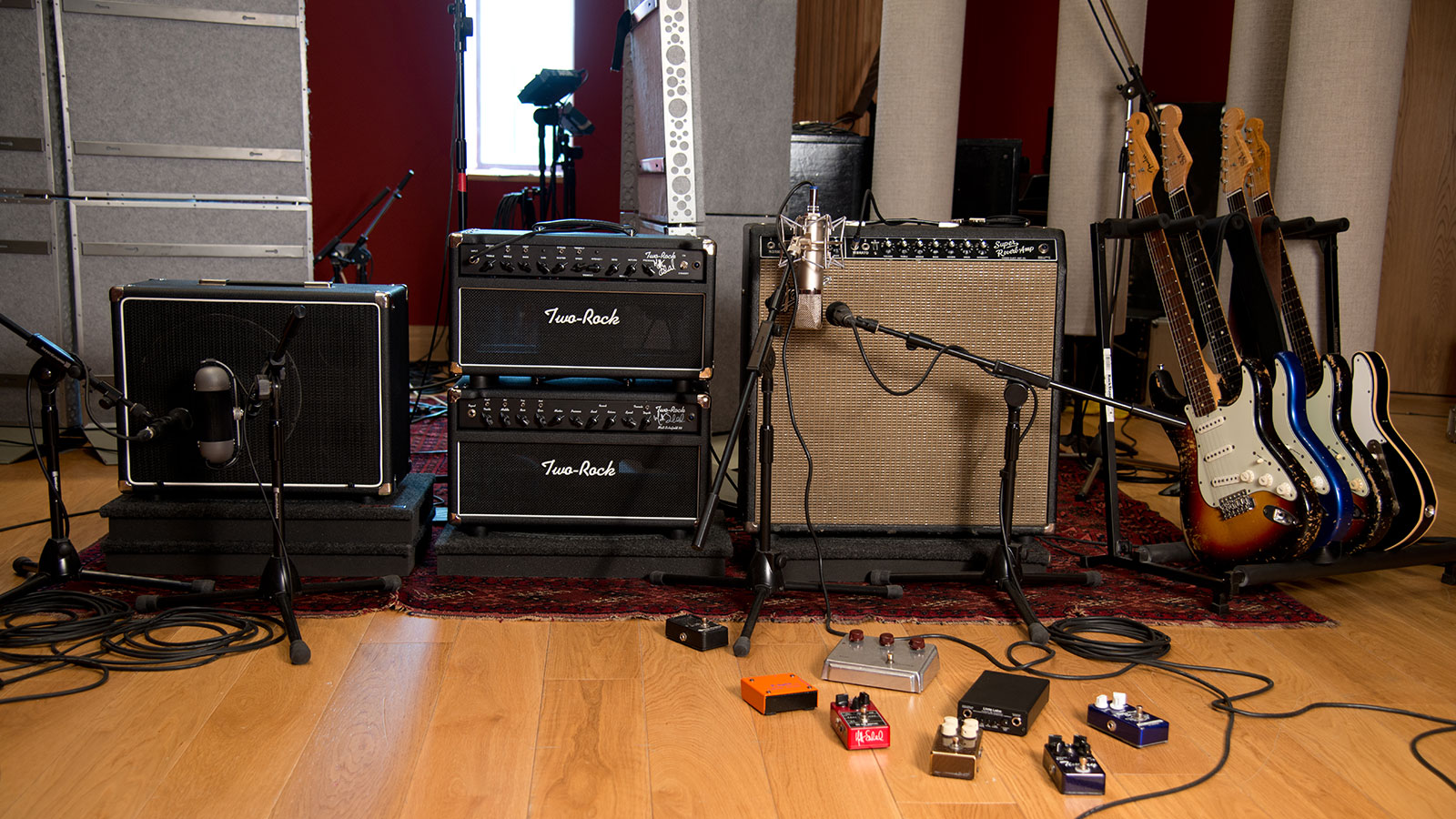Watch Steve Albini demonstrate how to record acoustic guitar and vocals
The audio engineer behind Nirvana and the Pixies' biggest albums shares tips aplenty in this video tutorial, and also shares his strategies for recording violin, cello and banjo
Recording an acoustic guitar can be a befuddling experience. It sounds so great in the room, so why does it sound so bad on playback? Well, help is at hand, and from one of the most recording engineers in alternative music.
Steve Albini, the man behind classic recordings from the likes of Nirvana, Pixies, the Breeders, and many more, and indeed guitarist/vocalist for seminal noise-rock band Shellac, can explain it all. And he has just shared a video masterclass on YouTube.
Shot in his Chicago studio, Electrical Audio, this Albini lesson not only offers advice on how to record acoustic guitar, but acoustic with vocals, and he tackles a variety of other stringed instruments, including cello, violin, and banjo, before demonstrating how these techniques can be brought to bear on an ensemble arrangement, with each instrument occupying its own place in the mix and minimal bleed.
Albini might be associated with electric releases, with electric guitars pushed through dimed amps, fuzz pedals, his expertise harnessed by artists in pursuit of noise, but there’s something fundamental about the acoustic instrument that speaks to his sensibility of letting capturing the band as opposed to imposing production techniques upon them.
He opens his lesson with an explanation of what we are hearing when we hear an acoustic instrument. This is what we are trying to capture on tape.
What this pickup does is amplify the movement of the bridge – that is, the initial sound of the string – and it completely ignores the rest of the system
“When I talk about recording an acoustic instrument, what I really mean is recreating the sense memory of having heard an acoustic instrument,” he says. “When you are listening to an acoustic instrument, the majority of the sound that you are hearing is the effect of the body on the sound.
“The string makes some sound on its own but the system of the string playing, and being amplified by the mechanics and the acoustics of the body, that’s what we hear, and that is what allows us to recognise the difference between one instrument and another. That is the reason we can tell between a cello and a violin, a guitar and a banjo; the bodies are different, and this system creates a different cumulative effect and overall sound.”
Get the MusicRadar Newsletter
Want all the hottest music and gear news, reviews, deals, features and more, direct to your inbox? Sign up here.

• How to record an electric guitar amp
• 5 ways to improve your guitar recordings
• Butch Walker's 13 essential tips for recording guitars
Things get a little complicated once an under-saddle acoustic guitar pickup is introduced.
“What this pickup does is amplify the movement of the bridge – that is, the initial sound of the string – and it completely ignores the rest of the system,” he says. “The top of the guitar, or the instrument, the air volume inside the instrument, the contribution of the back, the acoustic reflections formed by the shape of the instrument, the physical size of the instrument, the air that pumps in and out of the instrument through the soundholes – the entire rest of the acoustic and mechanical system of the system is completely ignored.”
This, says Albini, flattens the variances in sound between instruments, to the degree that you could take a high-end acoustic guitar and with an undersaddle pickup it might not sound that much different to a budget-friendly acoustic guitar under $/£500. “The pickup is doing the same work in either and it is ignoring the quality that is built into the rest of the instrument.”
Here, Albini games out some strategies to minimise bleed, which can pose a huge problem when when recording an acoustic guitar and vocal take at the same time. While they could be tracked separately, as Albini notes, they often sound more natural when performed together as opposed to overdubbing the vocal later.
He also offers some thoughts about the best microphones for recording, and a methodology that ultimately offers you the option of overdubbing an alternate take to the piece. And the video even features Rob Bochnik of The Frames et al on guitar, and indeed helped build Electrical Audio. Check it out at the top of the page. Subscribe to Electrical Audio's YouTube channel here.
Jonathan Horsley has been writing about guitars and guitar culture since 2005, playing them since 1990, and regularly contributes to MusicRadar, Total Guitar and Guitar World. He uses Jazz III nylon picks, 10s during the week, 9s at the weekend, and shamefully still struggles with rhythm figure one of Van Halen’s Panama.










